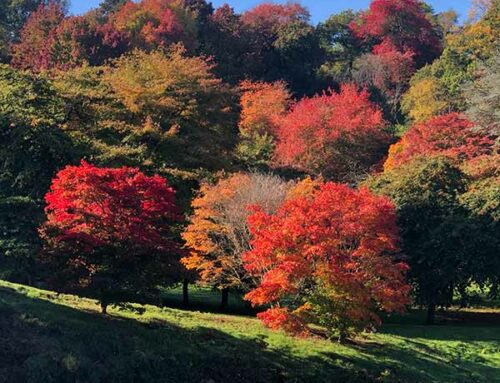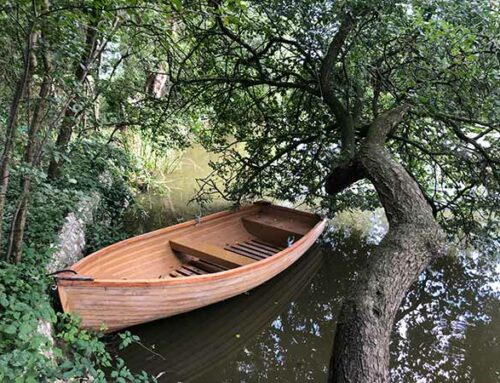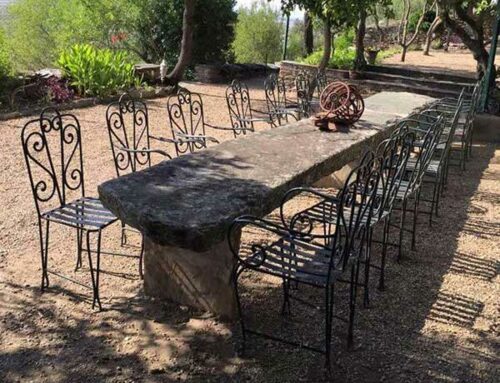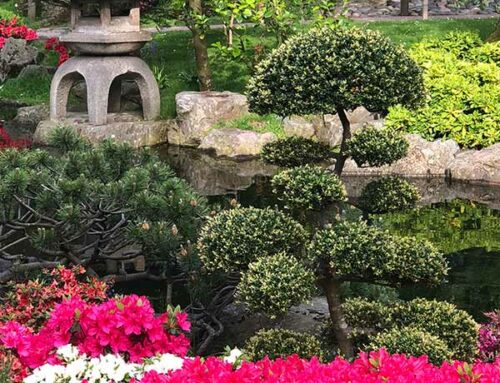Nymans is a spectacular garden overlooking the Sussex Weald.
It’s been under the National Trust’s care since 1953 but began its transformation when Ludwig Messel bought the 600-acre estate in the 1880s.
Nymans Gardens Sussex is one of the first properties the National Trust took on and in 2018 the gardens welcomed 354,502 visitors.
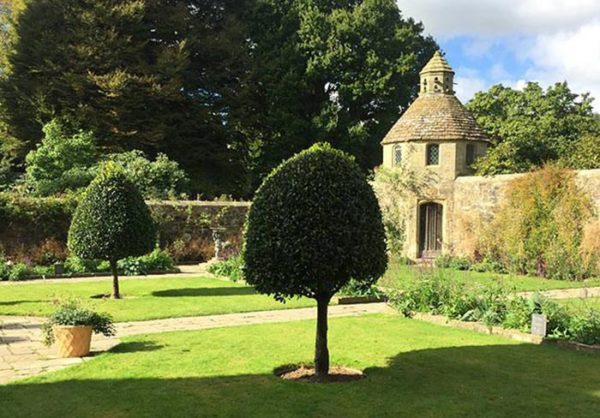
The Messel’s romantic walled garden at Nymans
The Messels
Ludwig Messel was a successful German stockbroker who set about transforming the Nyman Estate into an experimental garden. He collected plants from all corners of the globe to display his love of exotic and unusual specimens.
The house and gardens have evolved moving with the fashions of the 20th century and the tastes of the Messel family.
Ludwig’s son Leonard and his wife Maud inherited Nymans in 1915. They continued to cultivate and collect rare species of plants including exotic trees, camellias and rhododendrons.
Leonard also rebuilt the house which was a plain Regency style building and transformed it into a mock gothic mansion in the 1920s. However, Lionel’s newly designed home burnt down in 1947 on his 75th birthday.
Leonard’s daughter socialite Anne Messel first married Ronald Armstrong-Jones before a divorce and subsequent marriage to the 6th Earl of Rosse. Anne lived at Nymans in the partially reconstructed mansion before it was bequeathed to the National Trust.
Anne’s son married Princess Margaret and was granted the title Lord Snowdon. Lord Snowdon is known for his love of photography and lived in one of the estate properties for many years.
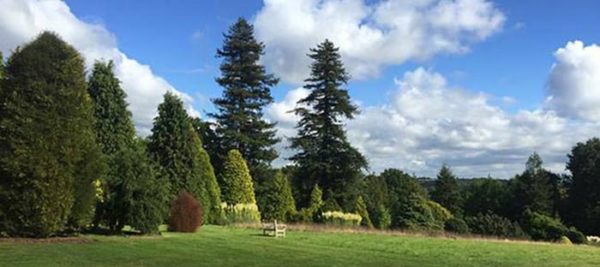
Conifer Collection at Nymans
What’s At Nymans?
Nymans spans 13 hectares and includes a large nationally important collection of Argentinean and Chilean plants which can be found in the Walled Garden.
Manicured lawns and topiary surround the gothic ruins before blending into flower meadows and areas such as the Wild Garden that contain old and exotic specimens from Tasmania.
The ruins of Leonard Messel’s remodelled gothic mansion serve as a romantic spot planted with roses and ornamental displays. They are strewn with plants and are one of the most stunning parts of the estate.
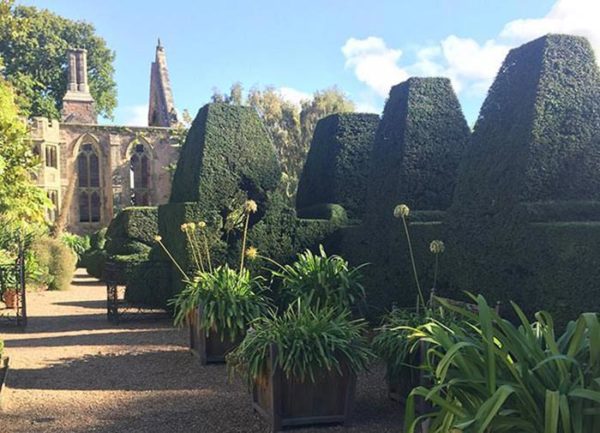
The gorgeous Yew Topiary Wall garden in spring, something that you don’t want to miss.
Nymans holds a large collection of over 60 different types of magnolia, including some rare and unusual varieties. Magnolias, camellias, rhododendrons, and conifers, including an enormous Cedar of Lebanon planted in 1850, are dotted around the landscape.
As one of the experimental Victorian garden estates, Nymans also has enormous Wellingtonia trees. A 51-metre-tall sequoia measured in 2013 was found to have a girth of 7.10 metres.
Sequoia Giganteum have a place in our history books. They were brought back to the UK as seeds and shoots by William Lobb in 1853 from the foothills of California’s Sierra Nevada and planted in the wealthy estates of Britain.
The enormous trees were named by the Horticultural Society as ‘Wellingtonia Gigantea’ which sparked a row with America whose Dr. Kellogg had discovered the tree and planned to call it Washingtonia before being pipped to the post by William Lobb!
The old trees of Nymans suffered damage in the Great Storm of 1987. The estate lost nearly 500 mature trees and the pinetum, one of its earliest features displaying exotic conifers, was destroyed. However, a 100-year-old magnolia sargentiana, one of only three still in existence in the UK, managed to survive and is one of Nymans’ most precious trees.
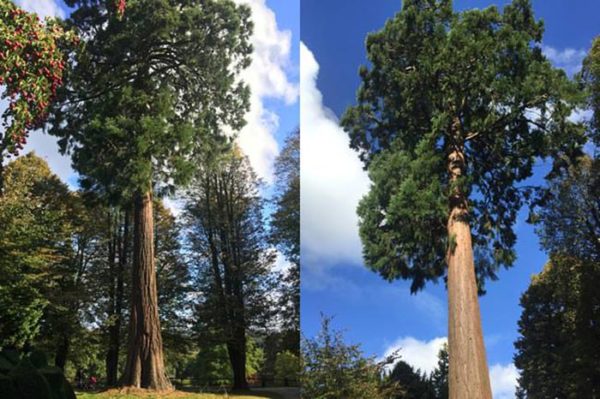
Giant Sequoia ‘Wellingtonia Gigantea’ at Nymans woodland garden
Famous ‘Messel’ Plants
The name nymansensis means ‘of Nymans’ and Nymans has become well known for its home-grown plants which have been selectively bred or suddenly appeared of their own accord.
Examples include Forsythia suspensa ‘Nymans’ and Camellia ‘Maud Messel’, but one of the best-loved is magnolia Leonard Messel. This magnolia has found its place in many UK gardens for its soft pink early spring flowers and neat growth habit. In May 1955 it gained the RHS Award of Merit and in 1969 a First Class Certificate.
Today you can find four plants in the gardens named after the Messel family and one named after their Head Gardener Cecil Nice.
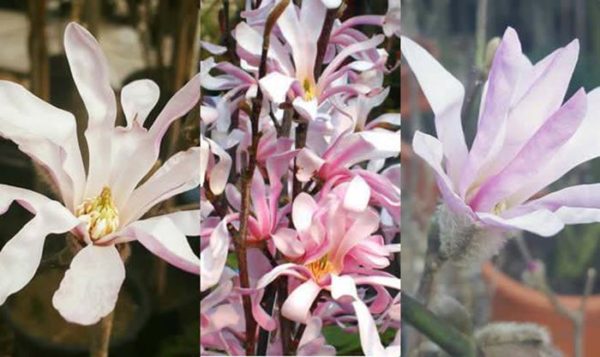
Magnolia Leonard Messel Flowering
When Is The Best Time To Visit Nymans?
Once we are able to travel again of course, the gardens are at their best from April to October but are open year-round.
February is a good time to view the snowdrops, followed by daffodils and crocus. The camellias, magnolias, and rhododendrons come soon after with the rest of the garden, such as the spectacular Cornus Kousa, blooming in late spring and early summer.
Nymans has a visitor-friendly restaurant and shops. It’s well worth a visit to wonder at trees so tall you have to look up twice and stroll around the romantic mansion ruins.
You may be interested in reading our other blogs on English Gardens >>
Sissinghurst Garden in Kent
Sub Tropical Gardens at Abbotsbury

